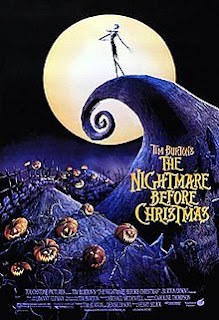The Evolution of Electronic Music
Growing up in Fairbanks, Alaska was not the ideal situation for my teenage years. There isn't much that goes on in this town that is classified as 'exciting'. However, I was lucky enough to know a family that was heavily into the electronic music scene, and happily put together a weekly event for the town's underage crowd.
Rave Parties.
I am talking about an organized dance party in a warehouse, abandoned building, or private property, typically featuring performances by DJs, playing endless tracks of electronic dance music. It's a flurry of light beams, glow sticks, high energy, and fun! This helped not only feed my passion for music but showed me a completely new genre of music that has spread into most common day sounds. And it got me thinking, where did it all begin?
History of Electronic Music: Point A
1970-1999
It may surprise you to find out that electronic music has been around a lot longer than you expected. The inventions of electronic instruments date all the way back to the late 1800s, however, I won't be going that far back, I'll start with something closer to our lifetimes.
The song below "became a worldwide hit peaking at #5 in the UK and #9 in the US. It was one of the first pop hits to be entirely played by a synthesizer,' states songfacts.com. (For the year 1972-1973)
This is one of the songs that started the demand for electronic music worldwide.
Performing Artist: Hot Butter
Original Composer: Gershon Kingsley
Release Date: 1972
Country of Origin: United States
The one aspect of this genre that constantly sticks out to me, not only with this early-day example but with any electronic music is the strict beat and tempo. You can easily follow along with the beat to the example I gave above, by listening for the sound of the tambourine. Electronic music is almost always on a constant beat, it is never lost within the layers of musical elements. Additional beats may be layered over the original, maybe a few silent beats but the song will always find its way back to the original beat.
Even though electronic music and instruments have been around for some time, it wasn't until the 1970s that this genre became popular. After many mainstream artists, like Pink Floyd, David Bowie, and Donna Summers started incorporating electronic music and sounds into their own works, it exposed the general public to a new and fresh experience.
The transition period between the 1970s to the 1980s for electronic music was best described by the Udemy Editors:
"Although electronic music was growing in popularity throughout the 1970s, most electronic tracks still used the structure of pop or rock and roll. It wasn't until the 1980s when synthpop, dance, and other genres would emerge on their own."
None would expect exactly how popular it would become. From a simplistic beat to disco to progressive electronic rock till it began a new genre of music, EDM (Electronic Dance Music). This is where electronic music became mainstream.
Here is what Jem Music International said about electronic music:
"The late 1980s and the 1990s are the time when dance music was born. The volume was turned up, and in some cases, tracks had vocals completely removed to literally just feature an electronic beat and sequences. Continuing advancements of music technology and accessibility meant that dance would continue to grow, and has done so into the 21st century, too."
Modern Day Electronic Music: Point B
2000-2020
As this type of music progressed so has its structure. Lyrics started being introduced to the electronic sounds, plus layering different sounds with different pitches and tunes. One specific musical element that is consistently present in modern-day electronic music along with the beat is the homophonic harmonic texture. Just like pop music, this genre depends heavily on this harmonic texture.
When listening to any type of electronic music, you will notice that many different beats, patterns, melodies, and sounds are being repeated and reorganized to keep the sound interesting using homophonic harmonic texture. Music creators will play with melodies, overlapping beats, and sound bytes within one song, by the end of the song it could sound completely different from the beginning. (Except for that main beat!)
Electronic music started off as simple as can be, just an electronic beat to create a tune. Nowadays, the possibilities are endless! With most electronic instruments being on computers, this has given many people the power to create their own music. It's hard not to notice how many new musicians have sprung up, and if you were to look, most artists would be a sub-genre to electronic music, even if it's not their main genre.
In this statement, the Brainvoyagers editors agree with my findings;
"Thanks to advances in microprocessor technology, it is now possible to create high-quality music using little more than a single laptop computer. Such advances have democratized music creation. It led to a massive increase in the amount of home-produced electronic music available to the general public via the internet."
Some sub-genres for electronic music are disco, techno, house music, hardcore, and trance music. The list goes on and on, and there are new artists every day coming to light, starting new genres and categories. This genre is constantly evolving with modern times, as it always has.
Below I have given another example of electronic music, however, this time is something you might feel more familiar with. Notice the different beats, tempos, and patterns being played, interacting with the lyrics throughout the song.
Song Title: The Business
Original Artist & Composer: Tiёsto
Release Date: September 25th, 2020
Country of Origin: Netherlands
Conclusion:
I have been listening to electronic music for as long as I can remember and I didn't even know it! I'm sure you have a few favorites that are in the subcategory of electronic music also. Everywhere we turn we can find traces of the electronic sound waves that started more than 100 years ago. With the surge in computer technology at everyone's fingertips, everyone has the capability to become their own DJ or music creator. I, myself was surprised just how far back this genre of music goes, and to see where it is now is mindblowing.
Sources:
1.) Popcorn by Hot Butter - Songfacts | © 2021 Songfacts®, LLC
2.) History of Electronic Music: From the 1970s to Today | Udemy Editors | Page Last Updated: February 2020 | © 2021 Udemy, inc
3.) The History of Electronic Music | Jem Music International | Company No. 106351
4.) History of Electronic Music | Electronic Music of Brainvoyager | Brainvoyager Editors | © 2021 Brainvoyagermusic



Crystal,
ReplyDeleteI loved your post! I knew that they played "Pop Corn" at games all the time, but I had never actually heard it as it was meant to be heard. I also had NO idea how far back Electronic Music dates, I totally thought it was new for some reason. I never really thought of myself as liking Electronic Music but i was actually getting in to "The Business". Your observations were spot on when you noted the harmonic texture, though I don't think it's something that I would've picked up on myself! Really well done blog, I learned quite a bit. Thank you!
Hi Crystal,
DeleteI really liked your post too! I had no idea that electronic music dated back so far! Before reading your blog post, I thought my earliest introduction was the group Deadmau 5, but I've probably heard many other songs inspired by electronic music and didn't realize it. My introduction came from a movie, The Art of Flight, and they used Deadmau 5's song "Ghost's and Stuff". And I really liked how you introduced your blog too, with rave parties. I was confused at first, but as you brought up EDM, it clicked and I thought to myself "That was a pretty smart intro". I have tried to make music on my own, and I agree with your statement that EDM may sound complex but it's all built on that first simple beat.
Hi Crystal!
ReplyDeleteI have never been huge into electronic music, but I do like to listen to it from time to time. I enjoy classical, jazz, and acoustic music. I also had no idea that electronic music was as old as you said it was. The 1800s?! That's insane. Wonderful blog post and I learned a lot!
- Josh Foster